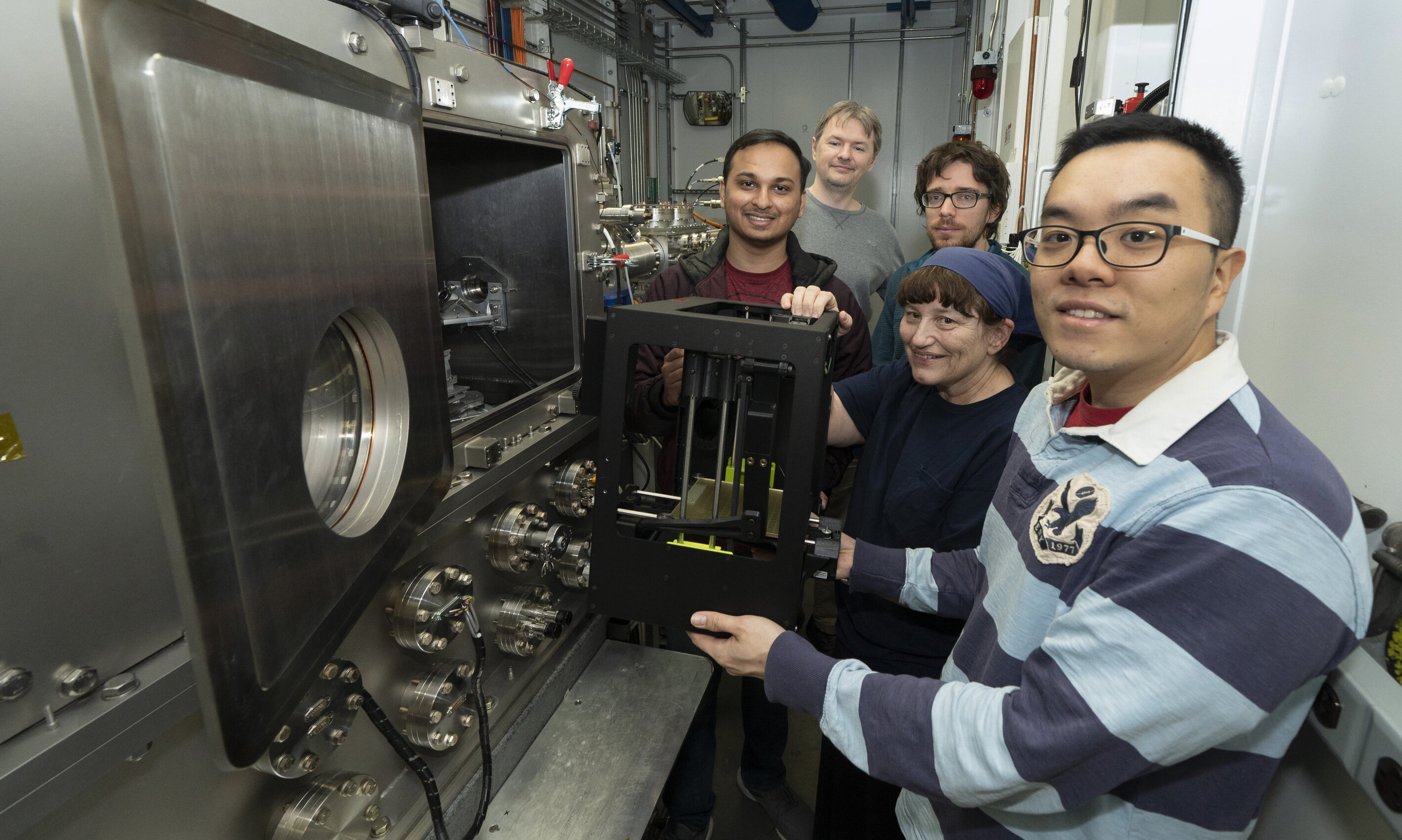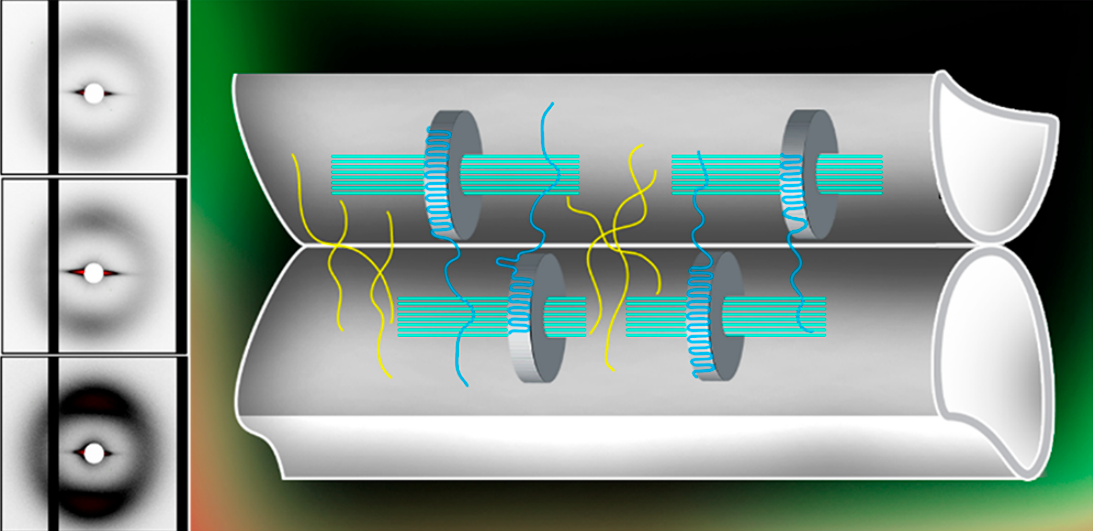Researchers from the Department of Energy’s Brookhaven National Laboratory (BNL) have devised a method of better understanding the Fused Filament Fabrication (FFF) 3D printing process.
Working with a team from Stony Brook University, the Brookhaven scientists developed a dual-scanning method, which enabled them to monitor material deposition during 3D printing in real-time. While testing their approach, the group found that shear induced by the nozzle can create “shish kebab” structures in polypropylene, a commonly-used semi-crystalline thermoplastic polymer. The “shish” components are long fibrous structures that connect the “kebabs,” which are “disk-like” in appearance. Utilizing their new technique, the researchers not only discovered the cause of the irregularities, but now believe it could also be used to provide an insight into how other polymers behave during FFF manufacturing.
“Additive manufacturing is a rapidly emerging technology and, until fairly recently, improvements were being made empirically—and often inefficiently. It was the Wild West of technology,” said Miriam Rafailovich, Professor at Stony Brook University. “The field is now maturing, and those involved realize that it is important to quantify both the procedures and the outcome, in order to ensure reproducibility among printed devices—that they meet standards for size, for example—and enable those standards to be validated.”

Better understanding FFF 3D printing
During the FFF 3D printing process, materials are extruded in a way that exposes them to a high level of heat and mechanical stress. The pressure caused on the filament during this process makes the layer want to distort, and as the layers build, the potential for irregularities to occur increases in equal measure. If the polymer deforms too much as it’s extruded from the printer’s nozzle, this can even lead to structural failures within the part.
According to the researchers, some materials are especially vulnerable to this type of structural irregularity. Semi-crystalline plastics for instance, feature polymer chains that are highly-organized and tightly packed, making them more susceptible to collapse. In order to better understand why failures happen, the team developed a simultaneous system which involved taking X-ray scattering readings along with temperature checks of the printing process in real-time.
The researchers’ fabrication monitoring method
To capture the necessary data, the research team leveraged their Soft Matter Interfaces (SMI) beamline system, housed at the Brookhaven lab’s National Synchrotron Light Source II (NSLS-II) facility. Using the scanner’s X-ray microbeam technology, the scientists were able to measure the structural details of 3D printed parts, right down to a resolution of several micrometers, or several millionths of a meter.
The SMI system also allowed the team to examine the interior structures of filaments during layer formation, while the machine’s infrared camera enabled them to monitor temperature throughout the process too. Yuval Shmueli, lead author and Stony Brook researcher explained the complicated procedure worked: “The X-ray microbeam combined with three detectors—for small, medium, and wide scattering angles—enabled us to gather high-resolution spatial morphological data on the printed structure as it was being printed.”
“One of the biggest challenges we faced was installing the 3D printer directly in the path of the X-ray beam, together with a slightly offset infrared thermal camera so that the temperature and high-resolution scattering spectrum could be measured simultaneously,” he added.

Wielding their newfound technique, the research team discovered that the shear induced by the printer’s nozzle during the FFF process, can sometimes create “shish kebab” structures in the widely-used polypropylene filament. The “shish” components of the formation appeared to be long fibrous structures, and these were attached to the dish-like “kebab” sections, to create a doner-like deviation.
Subsequent X-ray scattering tests revealed that the shish-like structures nucleated at the surface of the filament, and then propagated inward, towards the filament core. Summarily, when the second layer was printed, the polymer chains relaxed and diffused across the interface between the already-printed layer and that being-printed. The overall process caused the filaments to nearly completely fuse together.
Correlating the X-ray scattering results with subsequent mechanical measurements, the team found that the finished products featured excellent strength properties, rivaling those of products created using molds. As a result, the researchers considered their new scanning approach to be a success, and concluded that new applications of the method could lead to further discoveries about FFF 3D printing. “We hope that, following this work, more materials can be investigated in this manner for improving the 3D printing process and having better and more comprehensive insights on it,” concluded Shmueli.
X-ray advances in additive manufacturing
While the Brookhaven team’s combination of imaging methods may constitute a novel approach, X-ray technology itself has already been applied in many ways to improve the performance of 3D printed parts.
Auburn University’s Center for Additive Manufacturing for instance, has installed a $1.5 million X-ray CT system for the nondestructive testing (NDT) of 3D printed parts. The system has been described as “a real game changer” for the university’s aerospace and aviation industry production programs.
Similarly, scientists at Lawrence Livermore National Laboratory are researching the use of X-ray imaging to examine metal parts during the Laser Powder Bed Fusion (LPBF) process. The research is aimed at identifying the causes of defects in metal 3D printed parts and understanding how those flaws can be mitigated.
Researchers from the University of Nantes on the other hand, have used IR imaging to investigate the heat transfer and adhesion between layers during FFF 3D printing. The team set out to find the optimal set of print parameters, with which to maximize mechanical properties of the 3D printed parts produced.
The researchers’ findings are detailed in their paper titled “In Situ Time-Resolved X‑ray Scattering Study of Isotactic Polypropylene in Additive Manufacturing” in the Applied Materials and Interfaces journal. The report was co-authored by Yuval Shmueli, Yu-Chung Lin, Sungsik Lee, Mikhail Zhernenkov, Rina Tannenbaum, Gad Marom and Miriam H. Rafailovich.
The nominations for the 2020 3D Printing Industry Awards are now open. Who do you think should make the shortlists for this year’s show? Have your say now.
Subscribe to the 3D Printing Industry newsletter for the latest news in additive manufacturing. You can also stay connected by following us on Twitter and liking us on Facebook.
Looking for a career in additive manufacturing? Visit 3D Printing Jobs for a selection of roles in the industry.
Featured image shows the research team placing their 3D printer into the chamber of the Soft Matter Interfaces (SMI) beamline at Brookhaven Lab’s NSLS-II. Photo via BNL.


